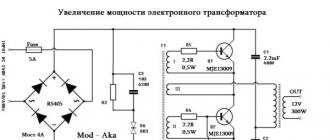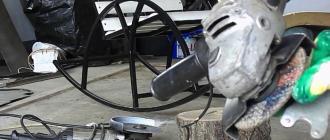I said last year "Gop" - it's time to jump :)
Rather, make the promised review of the running turn signals.
I ordered 1 meter of black tape WS2812B (144 LEDs) in a silicone tube, when ordering I chose "Black 1m 144led IP67" (perhaps someone will like the white color of the substrate, there is such a choice).
A little caveat
I received a tape welded from two half-meter pieces. The disadvantage of this is the vulnerable spot of the solder (contacts may be broken over time) and the increased gap between the LEDs.
Before buying, check with the seller for this moment 
Contact wires were soldered to the tape on both sides for serial connection of several pieces, since I did not need this, then I sealed off the wires on one side, sealed everything with a neutral sealant and wound a little more black electrical tape.


Attached to glass with double-sided transparent adhesive tape, for example.
Installation details
He degreased the surfaces, first glued adhesive tape to the tube (I will call it that, even though the cross-section is rectangular), cut off the protruding excess of a wider tape, pushed the edges of the tube into the slots between the ceiling and the upper parts of the decorative panels of the rear pillars (I hid the contact wires with a connector behind one panel ), centered it and began to press it against the glass, slowly pulling out the protective layer of the tape.
Unfortunately, there is no video - there were no free hands for shooting, and everyone's cars are different.
If something is not clear - ask in the comments.
The summer heat test was successful - nothing came off or floated.
The only negative is that the angle of inclination of the glass is shallow, the LEDs shine more upward. On a sunny day it is difficult to see, but since these are duplicate signals, then 
Now let's move on to the electronic stuffing.
I have used, but not so long ago discovered
For about the same cost, we get more buns
The sketch will work on Wemos without any special alterations when programming in the Arduino IDE, and if you implement a small web server, then when connected to it via Wi-Fi, you can change the values of variables such as the delay time between flashes, the amount of deceleration during emergency braking etc.
Here in the future, if someone is interested in implementing a project on the ESP8266, I can post an example for changing the settings via the web interface, saving them to EEPROM, and then reading them.
The web server can be launched, for example, through a turned on turn signal and pressing the brake pedal when the ignition is turned on (in the setup procedure, interrogate the state of the corresponding inputs).
For the implementation of the flashing mode with sharp braking, was purchased
The sketch tracks the level of deceleration when the brake pedal is pressed, if it exceeds 0.5G (sharp deceleration, but without squealing brakes), then a flashing mode is turned on for a few seconds to attract additional attention.
Control signals to the Arduino inputs from the "plus" of stops, turn signals and reverse are fed through galvanic isolators - optocouplers with current-limiting resistors, which ultimately form a LOW level at the Arduino inputs (they are constantly attracted to positive through 10kOhm resistors).
Power supply - 5 volts via a DC-DC buck converter.
The whole thing is folded as a sandwich and packed in a suitable box, on which an arrow marked the direction of installation for the correct orientation of the gravity sensor
Scheme and photo

The rating of the pull-up (to positive) resistors is standard - 10 kOhm, the optocoupler current limiting resistors are 1 kOhm. I dropped the optocouplers from the old boards, two got PC123, two - PC817. 
In the first photo you can see two additional conclusions, I made them for the turn signals. Since in my car, when the steering column lever is turned on, a short to ground occurs, I connected the wires to the lever block and the Arduino inputs. If the steering column lever commutes plus or take the signal from the "+" bulbs of the left / right turn signals, then connect them through a galvanic isolation. 

Well, now the sketch itself (Arduino IDE)
#include
I tried to comment on it as much as possible, but if I have any questions, I will try to add comments (therefore, I place it in the text of the review, and not in the attached file). By the way, this also applies to other points of the review - I will also supplement it if there are significant questions in the comments.
And finally, a demonstration of work (for the video I used a sketch with a demo mode).
Upd. The sketch with the demo mode was made specially to fit everything into one short video.
The brake light flashes only when braking suddenly (described above), when smoothly and standing in traffic jams, it simply lights up, without irritating the drivers behind.
The brightness in the dark is not excessive. the lights are directed more upward than backward due to the tilt of the glass.
Standard lights work as usual, this strip duplicates them.
Hello to all DIYers! Today we will consider one of the many applications for the WS2812B LED strip on addressable RGB LEDs. Such strips (as well as separately mounted WS2812B LEDs) can be used to illuminate the Ambilight background of computer monitors and televisions, dynamic LED lighting in a car, paintings, photo frames, an aquarium, and so on. They are widely used in the development of the design of any premises, in the form of New Year's illuminations or light shows. The use of LED strip type WS2812B makes it possible to obtain a large number of interesting projects.
The WS2812B LED is an RGB LED housed in a single package with the WS2801 chip.

The WS2812B LED itself is an SMD element designed for surface mounting. Internally, the LED is made up of red, green, and blue crystals in a single package. With this LED, a wide variety of light colors can be obtained.
The RGB LED is controlled through the Arduino microcontroller board.
I received a WS2812B LED strip from the Chinese. It is a piece of 1 meter long with the number of LEDs -144 pieces. I have long wanted to try for different experiments. With the help of libraries for Arduino - Adafruit Neopixel and Fast led, you can get a lot of very unusual lighting effects. But then I decided to try to make dynamic turn signals for a car in the so-called "Audi style."
The Arduino Uno board serves as a controller for controlling the LED strip, you can also use other boards - Arduino Nano, Arduino Pro mini).
Watch the whole process in the video:
List of tools and materials.
- Arduino Uno board;
- step-down board 12V \ 5V at 3A;
- resistors 100KΩ-4pcs;
- resistors 47Kom-4pcs;
- resistors 500 Ohm-1 piece;
-buttons (to simulate the inclusion of signals) -4 pcs;
-bread board
-screwdriver;
laboratory power supply
-soldering iron;
-cambric;
-tester.
-connecting wires.
Step one. Assembling the circuit.

I assembled the circuit using a breadboard (bradboard). The resistors connected to the digital inputs of the Arduino are needed to convert the vehicle's input signals from 12 to 5 volts. 500 ohm resistor to protect the WS2812B LED strip control line.
Photo of the board


As a converter from 12V to 5V, I used a ready-made board from Aliexpress. Any transducer with suitable parameters can be used. The converter is needed for a stable power supply of the Arduino and the WS2812B LED strip.

Step two. Arduino programming.
The digital inputs of the Arduino board No. 3,4 are used to turn on the left and right turn. Pin number 5 - enable the stop signal, pin number 6 - enable reverse gear. Pin number 8 - the control signal of the WS2812B tape.
In the Arduino IDE, upload the sketch (link above). Two options for the sketch - one for the front of the car, the other for the back. Use whichever you need. At the beginning of the sketch, you can set the number of LEDs you need. You can also adjust the speed of the turn signals according to your car. You can also change the brightness of the LEDs using the strip.Color (103,31,0) parameter - change the first two digits from 0 to 255. That is, you can experiment a little.
When you press the desired button, we give a signal to turn on the desired parameter. With the correct assembly of the circuit, it usually starts working immediately.
Photo in work.



Nice experiment turned out with this weekend construction. It was interesting
Consider the creation of a running turn signal like an Audi, using the example of a headlight from a Renault Clio car. Let's make turn signals and DRL in one device.
What you need for this: LED strip consisting of ws2812b LEDs Arduino nano controller(can be used in any other form factor) Car charger for mobile phones with USB output. Since the Arduino controller needs a voltage of 5V, we will use this charger as a voltage converter from 12V to 5V. Voltage stabilizer for 5V KR142EN5V (KREN5V) or any other imported analogue. 3 resistors 10 kOhm, as pull-up resistance.
Connection diagram
The arduino controller must be connected to the car network through a 12V -> 5V converter so that the voltage is supplied to the circuit from turning on the "ignition". To the voltage stabilizer KREN5V, you need to connect the positive wire from the current turn signal. This article discusses the connection and firmware of only one turn signal, in order to make a second turn signal, you need to similarly connect the second LED strip to any free digital output of the Arduino (for example 7), as well as add the code for it in the firmware according to our example.
Controller firmware
To work with pixel LEDs, you will need a library
#include
// connect the library
Adafruit_NeoPixel strip = Adafruit_NeoPixel (22, 8, NEO_GRB + NEO_KHZ800);
int t, t1, t2, t3, t4, p2, p1 = 0; // time variable
void setup () (
pinMode (2, INPUT);
pinMode (3, INPUT);
pinMode (4, INPUT);
digitalWrite (2, LOW);
digitalWrite (3, LOW);
digitalWrite (4, LOW);strip.begin ();
strip.show ();}
void loop () (
if (digitalRead (2) == LOW) (// If the turn signal is off
for (int i = 0; i< 23; i++) {
strip.setPixelColor (i, strip.Color (255,255,255)); // R = 255, G = 255, B = 255 - white color of the LED, when turned on, we light the running lights
}
strip.show ();
}if ((digitalRead (2) == HIGH) & (t == 1)) (// check if the turn signal is on
for (int i = 0; i< 23; i++) {
strip.setPixelColor (i, strip.Color (0, 0, 0)); // extinguish all diodes
}
strip.show ();
for (int k = 0; k< 3; k++){ // цикл до трех - сигнал «перестроения» , при кратковременном включении мигает 3 раза,for (int i = 0; i< 23; i++){
if (digitalRead (2) == HIGH) (k = 0;) // if during the blinking of the turn signal we get another key signal, then reset the counter so that the turn signal blinks at least 3 more times
strip.setPixelColor (i, strip.Color (255, 69, 0)); // R = 255, G = 69, B = 0 - LED colordelay ((t4) / 22);
strip.show ();}
if (digitalRead (2) == HIGH) (t4 = t4 + 20;) // if all diodes are lit yellow, but the signal from the relay is still on, then we increase the burning time
if (digitalRead (2) == LOW) (t4 = t4-20;) // if all diodes are lit yellow, but the signal from the relay is still on, then we increase the burning timefor (int i = 0; i< 23; i++){
strip.setPixelColor (i, strip.Color (0, 0, 0)); // R = 0, G = 0, B = 0 - LED color
delay ((t3) / 22);
strip.show ();}
if ((digitalRead (2) == LOW)) (t3 = t3 + 20;)
if ((digitalRead (2) == HIGH)) (t3 = t3-20;)
}if ((digitalRead (2) == HIGH) & (t == 0)) (// check if the turn signal is on
t1 = millis (); // remember what time you turned on
for (int i = 0; i< 22; i++) {
strip.setPixelColor (i, strip.Color (255, 69, 0)); // when you turn on the turn signal for the first time, light all the diodes yellow
}
strip.show ();
while (digitalRead (2) == HIGH) ()
t2 = millis (); // remember what time the turn signal turned off
t4 = t2-t1;for (int i = 0; i< 22; i++) {
strip.setPixelColor (i, strip.Color (0, 0, 0)); // extinguish the diodes when the signal from the turn relay disappears
}
strip.show ();
while (digitalRead (2) == LOW) (
if ((millis () - t2)> 2000) (break;)
}
if ((millis () - t2)<2000) {
t3 = millis () - t2; // time for which turn signals go out
t = 1; // flag, we know that the time value has been saved.
}
}if (digitalRead (4) == HIGH) (// special signals
for (int j = 0; j< 16; j++) {
for (int i = 0; i< 22; i++) {
strip.setPixelColor (i, strip.Color (255, 0, 0)); // R = 255, G = 0, B = 0 - LED color
}
strip.show ();
delay (20);
for (int i = 0; i< 22; i++){
}
strip.show ();
delay (20);
}for (int j = 0; j< 16; j++) {
for (int i = 0; i< 22; i++) {
strip.setPixelColor (i, strip.Color (0, 0, 255)); // R = 0, G = 0, B = 255 - LED color
}
strip.show ();
delay (20);
for (int i = 0; i< 22; i++){
strip.setPixelColor (i, strip.Color (0, 0, 0)); // R = 0, G = 0, B = 0 - LED color
}
strip.show ();
delay (20);
}
}if (digitalRead (3) == HIGH) (// strobe
for (int j = 0; j< 24; j++) {
for (int i = 0; i< 22; i++) {
strip.setPixelColor (i, strip.Color (255, 255, 255)); // R = 255, G = 255, B = 255 - LED color
}
strip.show ();delay (15);
for (int i = 0; i< 22; i++){
strip.setPixelColor (i, strip.Color (0, 0, 0)); // R = 0, G = 0, B = 0 - LED color
}
strip.show ();
delay (15);
}
delay (500);
Do the same for the second turn signal using the code.
Video how our headlight works
Many motorists, in order to improve the appearance of their car, tune their "Swallow" with LED lights. One of the tuning options is a running turn signal that draws the attention of other road users to itself. The article provides instructions for installing and configuring turn signals with running lights.
[Hide]
Assembly instructions
LED lamps are semiconductor elements that glow under the influence of an electric current. The main element in them is silicon. Depending on which impurities are used, the color of the bulbs changes.
Photo gallery "Possible variants of dynamic direction indicators"
Tools and materials
To make a running turn signal with your own hands, you will need the following tools:
- soldering iron;
- side cutters or pliers;
- soldering iron and soldering material;
- tester.
From consumables you need to prepare fiberglass. It is needed for the manufacture of a printed circuit board on which a semiconductor element will be placed. The required LEDs are selected. Depending on the characteristics of the LEDs and the values of the current and voltage of the on-board network, the characteristics of the protective resistors are calculated. Using the calculations, the rest of the network components are selected (video by Evgeny Zadvornov).
Sequence of work
Before making the turn signals, you need to choose a suitable scheme.
Then, based on the diagram, make a printed circuit board and apply markings on it to accommodate future elements.
The assembly consists of a sequence of actions:
- First, you should de-energize the car by disconnecting the negative terminal from the battery.
- Next, you need to remove the old direction indicators and carefully disassemble them.
- Unscrew old bulbs.
- The joints should be cleaned of glue, degreased, washed and allowed to dry.
- In place of each old element, a new running light is installed.
- Further, the assembly and installation of the lanterns is carried out in the reverse order.
- After installation, the wires are connected.
At the next stage, an additional stabilized power supply is connected to the network. Its input receives power from an intermediate relay, and the output is connected to a diode. It is better to place it in the dashboard.
When connecting the LEDs, make sure that the anode is connected to the positive of the power supply, and the cathode to the negative. If the connection is not made correctly, the semiconductor elements will not glow and may even burn out.

Features of installation and configuration of running direction indicators
You can install dynamic turn signals instead of conventional LEDs. For this, a board with LEDs and current-limiting resistors is removed and dismantled. On the repeater, you need to tear off the glass from the case. Then carefully cut out the reflector and remove it.
In place of the remote reflector, an SMD 5730 board is installed, on which the yellow LEDs are located. Since the repeater has a curved shape, the board will have to be stratified and slightly bent. For the old board, you need to cut off the part with the connector and solder it to connect the controller. Then all the components are returned to their place.
To adjust the timing of the running LED lights, a switch is soldered to the microcontroller. When a suitable speed is found, jumpers are soldered instead of a switch. When connecting two pins to ground, the minimum time between LED flashes is 20 ms. When the contacts are closed, this time will be 30 ms.

Issue price
You can make a running light turn signal from daytime running lights. Their cost is 600 rubles. As light sources in this case, you can take "pixel" RGB LEDs in the amount of 7 pieces for each running turn signal. The cost of one element is 19 rubles. To control the LEDs, you need to purchase an Arduino UNO worth 250 rubles. Thus, the total cost will be 1060 rubles.






